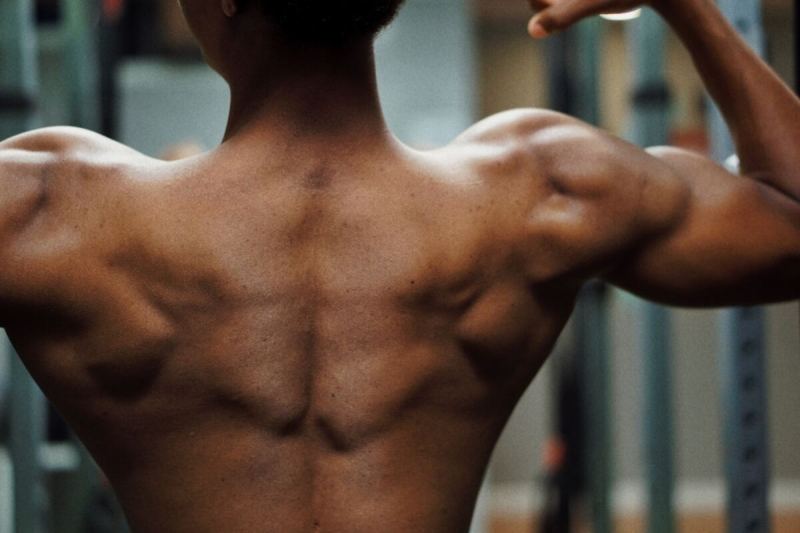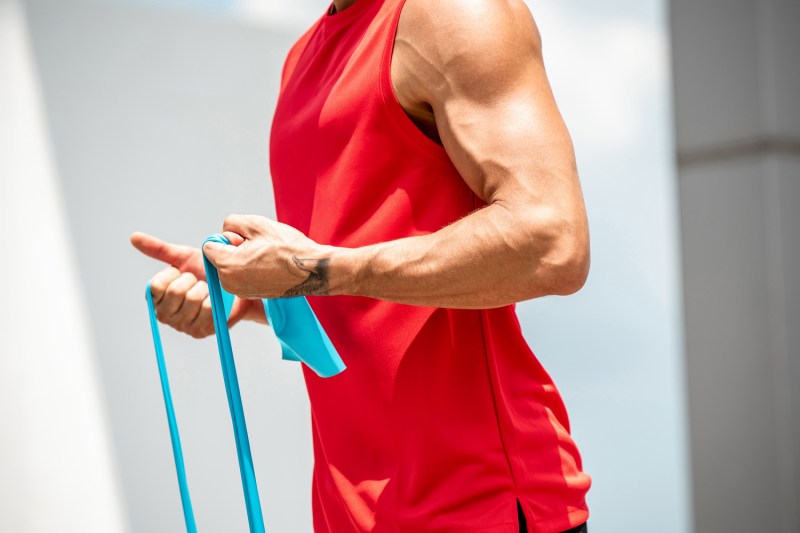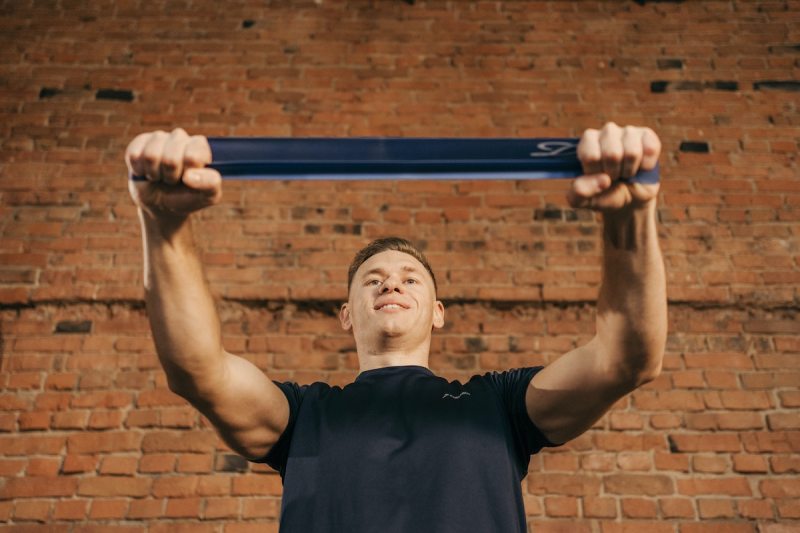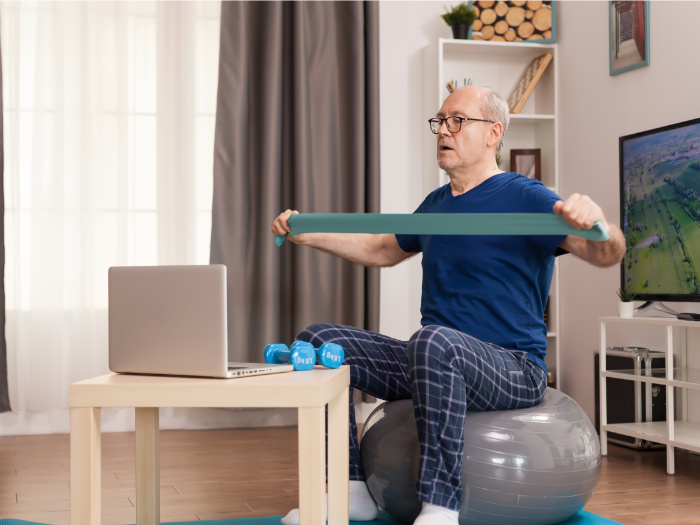
Resistance bands are versatile, portable, and affordable tools that can help you strengthen and sculpt your muscles. You can use them for various exercises to tone your entire body while being more gentle on your joints than most forms of strength training.
The shoulders are often neglected or injured by conventional weight training, but a resistance band can target them uniquely. In this article, you will learn about the anatomy of the shoulders, how to build them with only resistance bands, how often to train them, and five practical resistance band exercises for your shoulder workout.

Anatomy of the shoulders
The shoulders are composed of three major muscles: the anterior (front) deltoid, the lateral deltoid, and the posterior (rear) deltoid. Your shoulder can rotate and move in a lot of ways, but almost all motions come down to these three muscles!
These muscles work together to perform various movements of the arm, such as raising, rotating, and pulling. The front deltoid is responsible for lifting the arm forward, the lateral deltoid lifts the arm sideways, and the rear deltoid pulls the arm backward.
To develop balanced and well-defined shoulders, you need to work all three parts of the deltoid muscle. Some of the exercises on this list target each deltoid individually, but some work the entire shoulder as a whole or even parts of the back or chest!

Can you build shoulders with only resistance bands?
Yes, you can build shoulders with only resistance bands. Resistance bands are great for providing constant tension throughout the range of motion. This consistent force stimulates muscle growth and improves endurance. They also allow you to adjust the resistance level by changing the band length, width, or position.
You can perform various resistance band shoulder workouts, such as presses, raises, and rows, that target different parts of the deltoid muscle. Resistance bands are also safer and easier on the joints than free weights, which can cause injury or pain if used incorrectly. They’re also much more portable due to being so light and compact, so you can use them practically anywhere, including the gym, a hotel room, or your living room.

How often do you need to train your shoulders?
The frequency of your shoulder training depends on your goals, fitness level, and recovery ability. Generally, you can train your shoulders once or twice a week. One study found that increasing the frequency of workouts (in the same muscle group) from two times a week to three or four hardly provides additional gains, so there’s not much reason for you to work your shoulders more than two times a week.
You can also train your shoulders as part of a full-body workout or as an accessory to other exercises. The key is to give your shoulders enough rest and recovery time between sessions and to avoid overtraining or undertraining them. You don’t want to train the same muscle group two days in a row.

5 shoulder exercises for your resistance band workout
Front raises
Front raises target the front deltoid and help improve shoulder mobility and stability. They also work the upper chest and the core muscles. These are a great choice for resistance band workouts!
Instructions:
- Stand with your feet shoulder-width apart on top of a band and hold the handles or ends of the band with both hands in front of your thighs. The band should be taut but not stretched.
- Keeping your arms straight and your shoulders down, lift the band up to shoulder level, in line with your eyes. Pause for a second, then lower the band back to the starting position.
- Repeat for the desired number of reps.
Lateral raises
Lateral raises target the lateral deltoid and help shape and widen the shoulders. They also work the upper back and the traps.
Instructions:
- Stand with your feet shoulder-width apart on top of the center of a band and hold the handles or ends of the band with both hands by your sides. The band should be taut but not stretched.
- Keeping your arms slightly bent and your shoulders down, lift the band up to shoulder level, forming a T shape with your body. Pause for a second, then lower the band back to the starting position.
- Repeat for the desired number of reps.
Overhead press
Overhead press targets the whole shoulder complex and helps build strength and power. It also works the triceps, the upper chest, and the core muscles.
Instructions:
- Stand with your feet shoulder-width apart on top of a band and hold the handles or ends of the band with both hands at shoulder level and your palms facing forward. The band should be taut but not stretched.
- Keeping your elbows in and your shoulders down, press the band up over your head, extending your arms fully. Pause for a second, then lower the band back to the starting position.
- Repeat for the desired number of reps.
Y raises
Y raises target the rear deltoid and help improve posture and balance. They also work the upper back and the traps. For these, you’ll want to make sure you have one of the best resistance bands.
Instructions:
- Stand with your feet shoulder-width apart on top of a band and hold the handles or ends of the band with both hands in front of your thighs. The band should be taut but not stretched.
- Keeping your arms straight and your shoulders down, lift the band up and out to form a Y shape with your body. Essentially, you are raising your arms in between where you would for front raises and lateral raises. Pause for a second when your arms are parallel to the floor, and then lower the band back to the starting position.
- Repeat for the desired number of reps.
Resistance band pull aparts
Resistance band pull-aparts target the rear deltoid and help prevent shoulder injuries and pain. They also work the upper back and the rhomboids.
Instructions:
- Stand with your feet shoulder-width apart and hold the band with both hands in front of your chest. The band should be taut but not stretched.
- Keeping your arms straight and your shoulders down, pull the ends of the band apart and away from each other. Squeeze your shoulder blades together at the end of the movement. Pause for a second, then release the band back to the starting position.
- Repeat for the desired number of reps.



